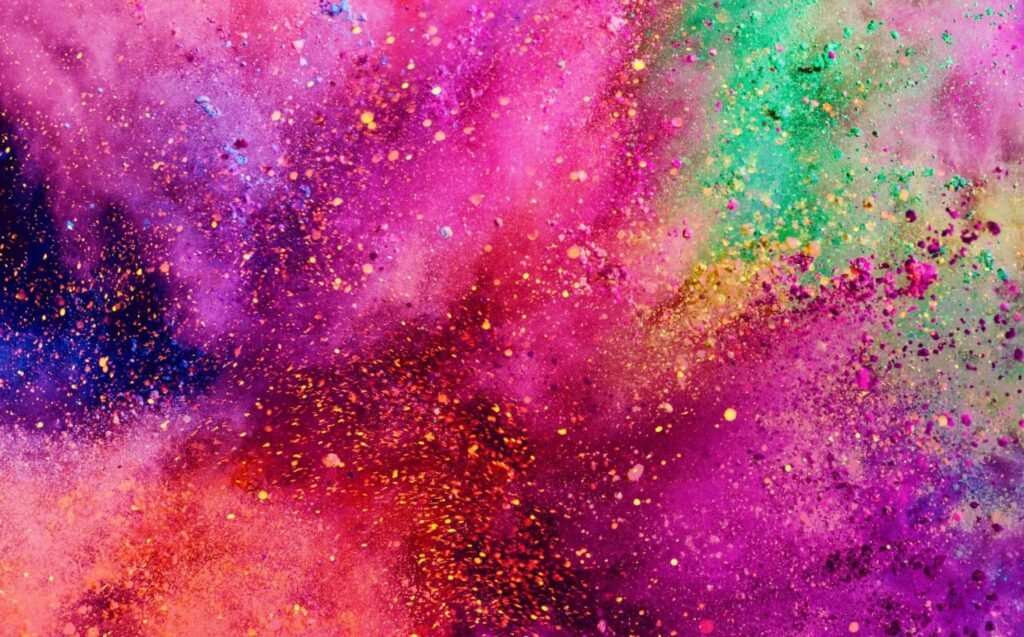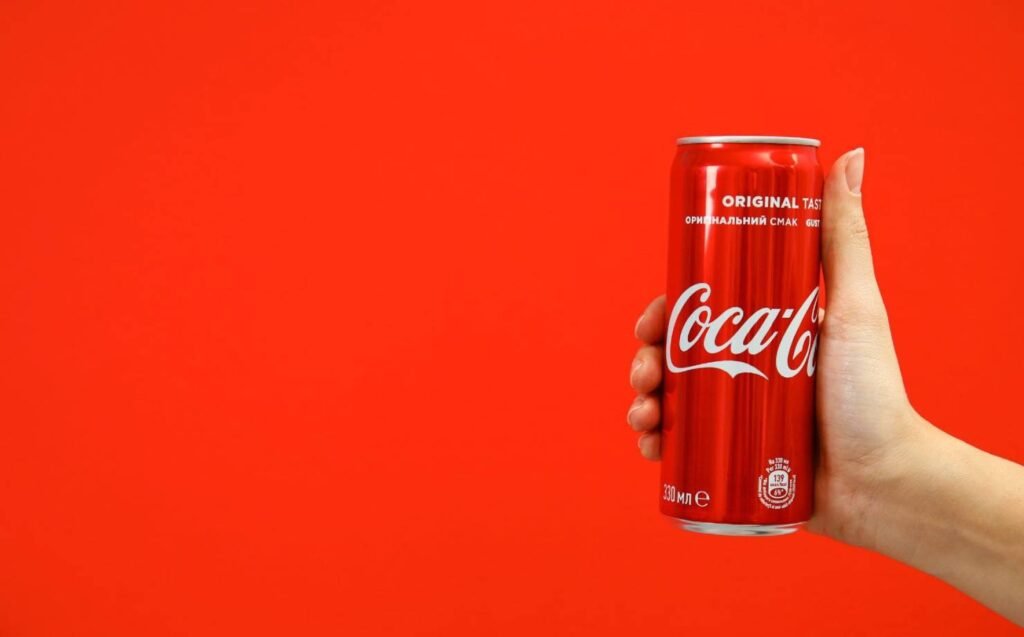Marketing: Color theory in advertising

In the world of marketing, color theory is a fundamental tool to achieve effective communication with our target audience. Color is a key element in marketing strategy, as it has the ability to influence consumers’ emotions and purchasing decisions. For this reason, it is important to know the basic principles of color theory and how to apply them in our marketing strategy.
In this article, we will explain everything you need to know about color theory in marketing. We will see how different colors affect consumers’ emotions and perceptions, and how we can use this information to create a coherent and attractive brand image. In addition, we will offer practical tips on how to apply color theory to your marketing campaigns and improve the effectiveness of your messages. Let’s get started!
Would you like to boost your sales with marketing strategies? At Virtual Arena we are specialists in consulting and development of 360º marketing projects.
Fundamentals of Color Theory
Color theory is a field of study that focuses on understanding how colors interact and combine with each other. In this section, we will explore the basics of color theory, including its history and development, color psychology and the color wheel.
History and Development
Color theory has a long history dating back to ancient Greece, where the philosopher Aristotle was one of the first to study colors and their properties. However, it was the scientist Isaac Newton who gave a major boost to the study of color in the 17th century, when he discovered that white light can be broken down into a series of colors using a prism.
Since then, color theory has evolved and developed in different fields, from physics to psychology to art. Today, it is a fundamental tool in the world of design, advertising and marketing.
Color Psychology
Color psychology refers to the study of how colors affect our emotions and perceptions. Colors can have a subconscious impact on us, which means they can affect our decision making and behavior without us even realizing it.
For example, red is associated with passion and energy, while blue is associated with calm and confidence. Marketers use this understanding of color psychology to create branding and advertising strategies that focus on the colors that best represent their products and services.

The Chromatic Circle
The chromatic circle is a fundamental tool in color theory. It is a circle showing primary colors (red, yellow and blue), secondary colors (green, orange and purple) and tertiary colors (yellow-green, yellow-orange, red-orange, red-purple, blue-purple and blue-green).
The chromatic circle is useful to understand how colors interact with each other and how they can be combined to create different effects and emotions. For example, complementary colors (which are opposite each other on the color wheel) can be used to create a striking and attractive contrast in design.
In conclusion, color theory is a fascinating field that is of great importance in the world of design, advertising and marketing. Understanding the fundamentals of color theory, including its history and development, color psychology and the color wheel, is essential to creating effective branding and advertising strategies.
Colors and Associated Emotions
Colors have a great influence on our emotions and perceptions. Each color evokes different feelings and associations in people. In marketing, it is important to take these associations into account in order to convey the desired message and connect with the target audience.
Here are some of the most commonly used colors in marketing and the emotions associated with them:
Red: Passion and Energy
Red is an intense and vibrant color that evokes feelings of passion, energy and excitement. It is a color widely used in marketing to attract attention and generate a sense of urgency. An iconic example of the use of red in marketing is the Coca-Cola brand, whose logo is red and white.
Blue: Confidence and Serenity
Blue is a color that conveys confidence, serenity and stability. It is a color widely used in the corporate and financial world to convey an image of professionalism and reliability. An example of the use of blue in marketing is the professional social network LinkedIn, whose logo is blue.
Green: Health and Nature
Green is a color that evokes feelings of health, freshness and nature. It is a color widely used in marketing for products related to health, food and nature. An example of the use of green in marketing is the organic food brand Whole Foods, whose logo is green.
Yellow: Optimism and Happiness
Yellow is a cheerful and optimistic color that evokes feelings of happiness and energy. It is a color widely used in marketing for products aimed at a young and dynamic public. An example of the use of yellow in marketing is the Red Bull energy drink brand, whose logo is yellow and red.
Orange: Enthusiasm and Creativity
Orange is a color that conveys enthusiasm, creativity and fun. It is a color widely used in marketing for products related to youth and creativity. An example of the use of orange in marketing is the technology brand Apple, whose logo is orange and white.
Black: Elegance and Sophistication
Black is an elegant and sophisticated color that conveys a sense of exclusivity and luxury. It is a color widely used in marketing for high-end products and luxury brands. An example of the use of black in marketing is the Rolex watch brand, whose logo is black and gold.
White: Purity and Simplicity
White is a color that conveys a sense of purity, cleanliness and simplicity. It is a color widely used in marketing for products related to hygiene and purity. An example of the use of white in marketing is the cleaning products brand Clorox, whose logo is white and green.
In short, colors have a great impact on our emotions and perceptions. In marketing, it is important to take into account the associations that each color evokes to convey the desired message and connect with the target audience.

Application of Color in Marketing and Branding
In color theory applied to marketing, color is one of the most important elements for brand identity and advertising design. The correct use of colors can increase brand recognition and the effectiveness of advertising campaigns.
Brand Identity
Brand identity is the image that the company wants to project to its customers. Colors are an important part of brand identity and should be consistent across all marketing and advertising materials. Consistent use of brand colors can increase brand recognition and customer loyalty.
Advertising Design
Advertising design is the process of creating effective advertisements. The use of color in advertising design is critical to attract the customer’s attention and convey the brand’s message. Colors can evoke emotions and affect customers’ perception of the brand.
Web Site Design
Website design is the process of creating an attractive and functional website. The use of color in website design can affect user experience and brand perception. Colors should be consistent with the brand identity and should be used effectively to attract the user’s attention.
Product Packaging
The color of product packaging is an important part of the marketing strategy and can affect customers’ purchasing decisions. Colors can convey messages and create associations in the customer’s mind. Consistent use of brand colors on product packaging can increase brand recognition and customer loyalty.
In summary, the application of color in marketing and branding is critical to the success of the marketing strategy and effective communication with customers. Consistent use of brand colors in advertising design, website design and product packaging can increase brand recognition and customer loyalty.

Influence of Color on Consumer Perception and Behavior
Color is a key element in any company’s marketing strategy. Colors have the ability to affect our emotions, thoughts and behaviors in subtle but significant ways. Therefore, the choice of color in your marketing strategy can affect how your brand is perceived and how consumers feel when they interact with it.
Purchasing Decisions
According to studies, 85% of consumers consider color as one of the main factors when making a purchase decision. Color is a powerful tool for influencing consumer purchasing decisions. Therefore, it is important to choose the right colors for your brand and product.
Audience Preferences
Each color can influence consumer perception and behavior. Therefore, it is essential to understand the meaning of each color in order to choose the best options to convey our brand message. For example, red can increase energy and excitement, while blue can convey confidence and tranquility.
Psychological Impact
Color psychology influences brand perception and consumer behavior. According to color theory, each color has a different psychological impact on people. For example, red can increase blood pressure and heart rate, while green can have a calming and relaxing effect.
In conclusion, the use of color in marketing is a powerful tool to influence consumers’ purchasing decisions and convey your brand message. Therefore, it is critical to understand color psychology and choose the right colors for your brand and product.

Case Studies: Famous Brands and their Use of Color
In this section, we will analyze some case studies of famous brands and how they have used color in their marketing strategy.
Coca-Cola and Red
Coca-Cola is one of the most recognized brands in the world, and much of its success is due to its marketing strategy. The color red is a key element in the brand’s identity, as it transmits energy, passion and dynamism. In addition, this color is easily recognizable and is directly associated with Coca-Cola.
Apple and White
Apple is another brand that has been able to use color effectively in its marketing strategy. White is the brand’s main color, and is associated with simplicity, elegance and innovation. In addition, this color allows the brand’s products to stand out on their own, without the need to use flashy or strident colors.
Rolex and Green
Green is the signature color of the Rolex brand, and is associated with quality, exclusivity and elegance. This color conveys the feeling of being in contact with nature, which reinforces the idea that Rolex watches are made with high quality materials and are durable.
Amazon and Orange
Orange is Amazon’s main brand color, and is associated with creativity, energy and fun. This color conveys the idea that shopping on Amazon is a fun and exciting experience, and that customers can find a wide variety of products on the platform.
In conclusion, these famous brands have used color effectively in their marketing strategy, and have managed to convey the values and identity of the brand in a clear and concise manner. Each color has its own meaning and associations, and it is important to choose the right color to convey the desired message.

Color Choice Considerations and Challenges
When choosing the color palette for a brand or product, it is important to consider several factors. Here are some challenges and considerations to keep in mind when choosing the right colors.
Culture and Color
It is important to keep in mind that colors can have different meanings in different cultures. For example, red may be a good luck color in Asia, while in the West it is associated with danger or warning. Therefore, it is essential to research the cultural meanings of colors before choosing a color palette for a brand or product.
Visual Consistency and Contrast
Visual consistency is important to create a strong and recognizable brand. Therefore, it is essential to choose colors that are consistent with the visual identity of the brand. In addition, the contrast between colors is also important to ensure that the content is legible and easy to understand.
Security and Accessibility
Safety and accessibility are also key considerations when choosing a color palette. Some colors may be dangerous or difficult to see for people with visual impairments. It is therefore essential to ensure that the colors chosen are safe and accessible to all users.
In conclusion, color choice is a crucial aspect of marketing, and it is essential to consider several factors when choosing a color palette for a brand or product. By considering culture, visual consistency, contrast, safety and accessibility, we can ensure that the colors chosen are effective and appropriate for the target audience.
In short, color theory is a powerful tool in the marketing world. It allows us to create effective color strategies that can influence brand perception and consumer behavior. By understanding the three fundamental aspects of color theory: hue, hue and lightness, the chromatic circle and color modes, we can apply this theory effectively in our marketing campaigns.
It is important to note that the color strategy should be consistent with the brand and the visual content being promoted. It is not simply a matter of choosing colors at random, but of selecting a color palette that adequately represents the brand and appeals to the target audience.
We recommend working with marketing and graphic design specialists to create an effective color strategy. These professionals can help select the right colors and create visual content that is consistent with the brand and color strategy.
In conclusion, color theory is a valuable tool that can significantly improve our marketing campaigns. By applying this theory effectively, we can influence brand perception and consumer behavior in a positive way.
Share note:
Recent articles
Contact with experts
Looking for help with your marketing strategy? At Virtual Arena we are professionals in creating customized marketing strategies.
Do you have a project in mind?
Related articles







